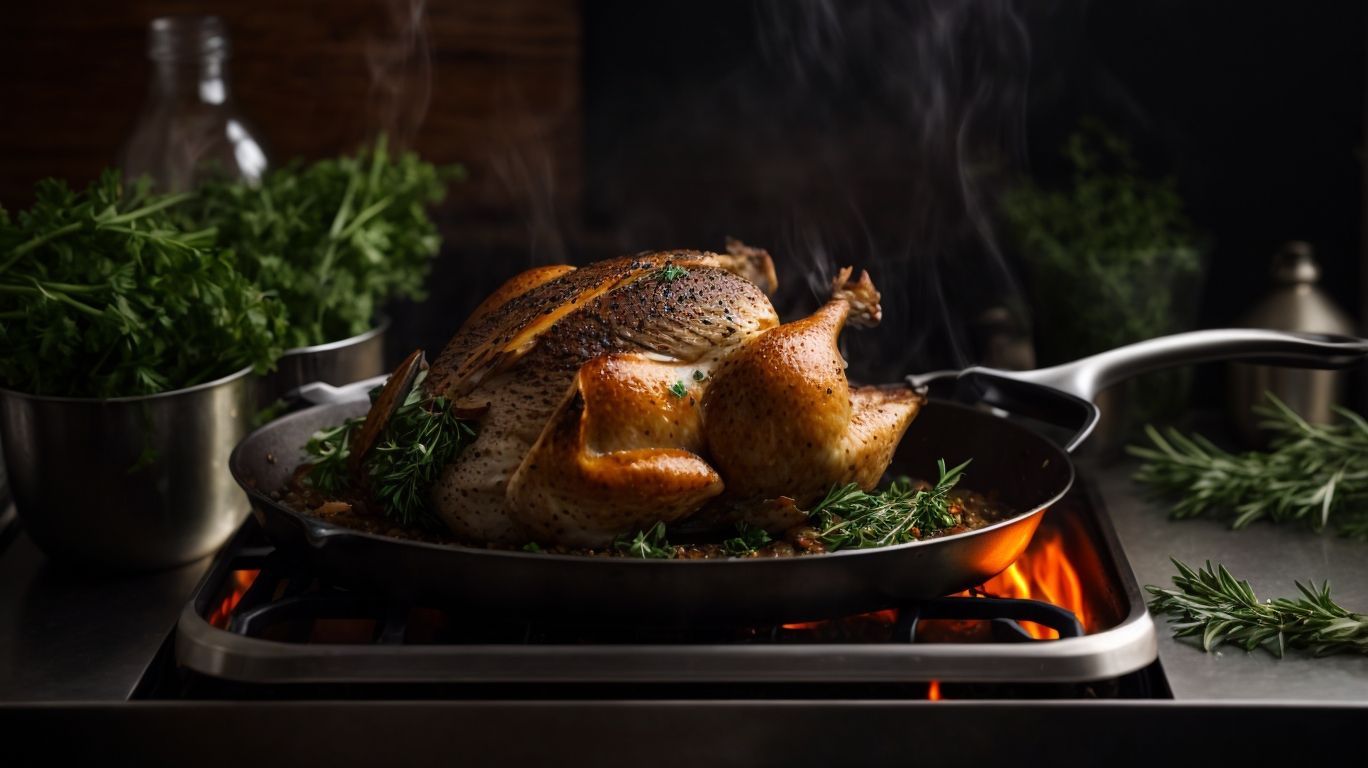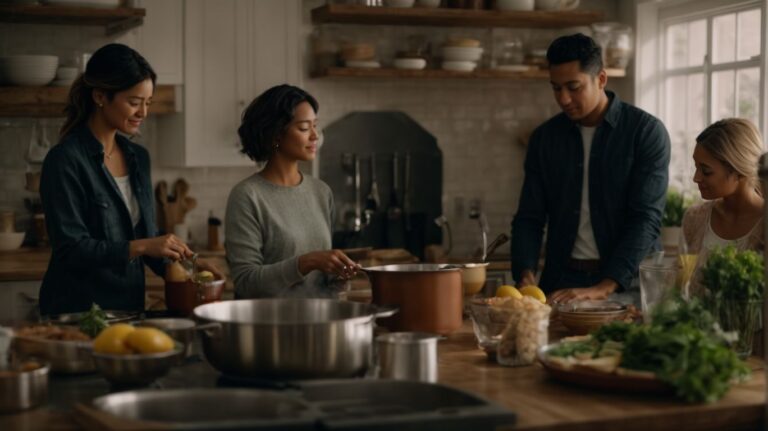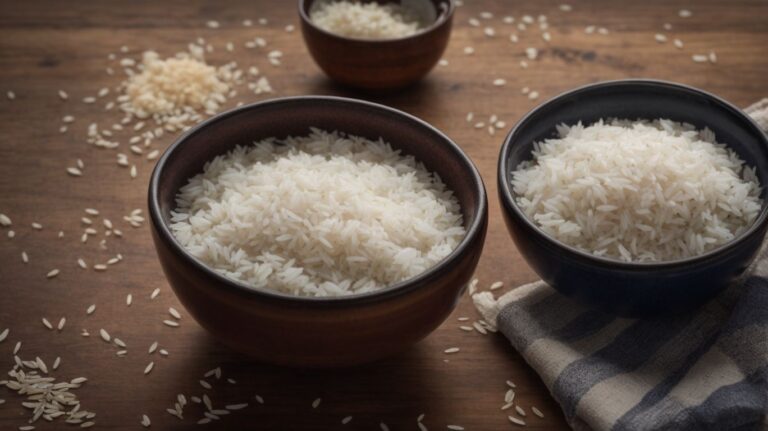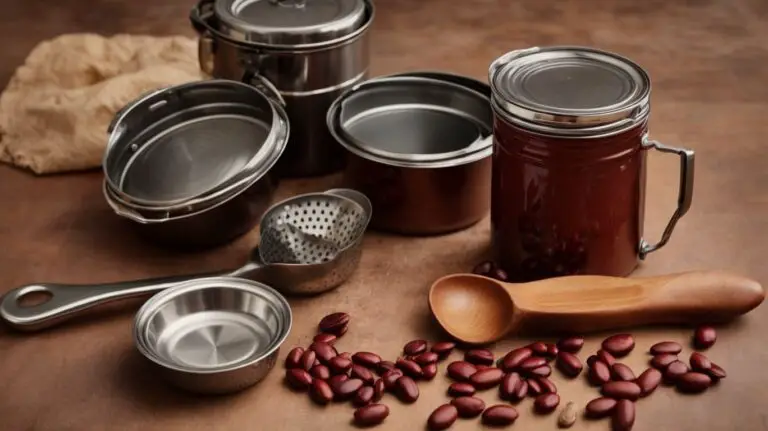How to Cook Quail on the Stove?
Curious about cooking quail on the stove? We’ll explore the wonderful world of quail – a delicious and nutritious protein option that is quick and easy to prepare. From the necessary ingredients to different cooking methods, we’ll cover everything you need to know to cook quail like a pro.
Whether you’re a seasoned chef or a cooking novice, we’ve got you covered with tips and tricks for a successful quail cooking experience. Let’s get started on this culinary adventure!
Key Takeaways:
What is Quail?
Quail, a type of game meat, is known for its unique flavor and tender texture, making it a popular choice for culinary enthusiasts.
One of the defining characteristics of quail meat is its rich and earthy taste, which sets it apart from more commonly consumed poultry varieties. The tenderness of quail meat makes it a versatile ingredient that can be grilled, roasted, or even pan-seared to perfection.
- Its slightly gamey undertones appeal to those seeking a more adventurous palate experience.
- Quail meat’s delicate texture lends itself well to absorbing flavors from various herbs and spices, enhancing its overall taste profile.
- Due to its smaller size compared to other game meats, quail is often favored for its quicker cooking times, making it ideal for busy cooks looking to prepare a delicious meal in a hurry.
Why Cook Quail on the Stove?
Cooking quail on the stove offers a quick and efficient method to achieve crispy, seared perfection, enhancing the flavors of this delicate meat.
When you prepare quail on the stove, the direct heat from the pan ensures the meat cooks evenly and retains its natural juices. The high heat also helps to create a mouthwatering crispy exterior while keeping the inside tender. This cooking method allows you to season the quail generously, allowing the flavors to penetrate the meat deeply. Pan-frying quail enables you to monitor the cooking process closely, ensuring that each piece achieves the desired level of sear without overcooking.
Quick and Easy Preparation
Preparing quail for cooking on the stove is a quick and straightforward process that requires minimal ingredients such as oil and butter for a delicious outcome.
First, start by rinsing the quail under cold water and pat dry with paper towels.
Next, season the quail with your favorite herbs and spices to enhance the flavor.
Then, heat a skillet over medium-high heat with a drizzle of oil and a knob of butter.
Once the skillet is hot, add the quail and sear them on each side until they are golden brown, ensuring they are cooked through.
Remove the quail from the skillet and let them rest before serving hot and enjoy this flavorful dish!
Versatile Cooking Methods
Quail offers versatility in cooking methods on the stove, including pan-searing for a crispy finish, roasting for a tender texture, and grilling for a smoky flavor.
When pan-searing quail, the key is to preheat the pan to ensure a nice, golden-brown crust forms on the outside while keeping the meat juicy and flavorful.
Roasting quail involves gently cooking it in the oven, typically with aromatics like herbs and garlic, to infuse it with a depth of flavor and achieve a succulent texture.
On the other hand, grilling quail over an open flame imparts a delicious smokiness that elevates its natural taste.
Delicious and Nutritious
Quail cooked on the stove not only delights the palate with its delicious flavors but also offers a nutritious meal when paired with savory sauces, plums, and rich stocks.
When preparing stove-cooked quail, the combination of tender meat and fragrant ingredients create a symphony of taste that elevates the dining experience to a whole new level. The succulent quail meat absorbs the flavorful sauces, infusing every bite with a burst of savory goodness.
The addition of plums adds a hint of sweetness that perfectly balances the dish’s overall profile. These sweet and tangy notes intertwine with the rich stocks, creating a harmonious blend of flavors that dance on the taste buds.
What Do You Need to Cook Quail on the Stove?
To cook quail on the stove, you’ll need a variety of ingredients, including seasonings, spices, and essential cooking equipment like a cast-iron pan or oven for optimal results.
When preparing to cook quail on the stove, gather ingredients such as quail, olive oil, salt, pepper, garlic, thyme, and rosemary to enhance the flavor profile. These seasonings delicately complement the delicate taste of quail meat.
For the cooking process, opt for a heavy-duty cast-iron pan, which distributes heat evenly and adds a savory sear to the quail. Alternatively, you can use an oven for a different flavor profile by roasting the quail to perfection.
Fresh Quail
Fresh quail, with its tender breast meat and flavorful legs, is essential for a successful stove-cooking experience, ensuring optimal taste and texture.
When preparing a delicious dish on the stove, the choice of meat plays a pivotal role in the final outcome.
- Utilizing the tender breast meat of fresh quail ensures a juicy and succulent result, while the flavorful legs add depth and richness to the overall flavor profile.
- The freshness of the quail meat enhances the dish, bringing a vibrant and robust essence to every bite.
- Experienced chefs often prioritize using high-quality cuts of meat like quail to elevate their culinary creations, as it guarantees a satisfying and memorable dining experience.
Seasonings and Spices
Seasoning and spicing quail with aromatic herbs like parsnips and green cabbage can elevate the flavors and add a unique twist to your stove-cooked dish.
In terms of seasoning quail, the use of parsnips and green cabbage not only imparts a delightful aroma but also infuses the meat with a depth of flavor that is truly exceptional. The earthy sweetness of parsnips complements the rich, gamey taste of quail, creating a harmonious balance on your plate. Meanwhile, the crispness and freshness of green cabbage provide a delightful contrast, elevating the overall texture of the dish.
To enhance these flavors further, consider incorporating a blend of spices such as cumin and coriander, which can add a warm and slightly nutty undertone to the quail. These spices work in tandem with the herbs, enhancing their aromatic profile and bringing out the natural flavors of the meat.
Cooking Equipment
Essential cooking equipment for stove-cooking quail includes a reliable frying pan, quality oil, and butter for achieving the desired sear and crispy finish.
When preparing quail on the stove, a good quality non-stick or cast-iron frying pan is essential for even cooking and easy clean-up. Plus the pan, opt for a high smoke point oil like avocado or grapeseed oil to prevent burning and impart a subtle flavor into the meat. Using butter in conjunction with the oil adds a rich and decadent taste while contributing to the beautiful golden-brown crust. These components are pivotal in enhancing the overall flavor profile and texture of the dish, making your quail a memorable culinary experience.
How to Prepare Quail for Cooking on the Stove?
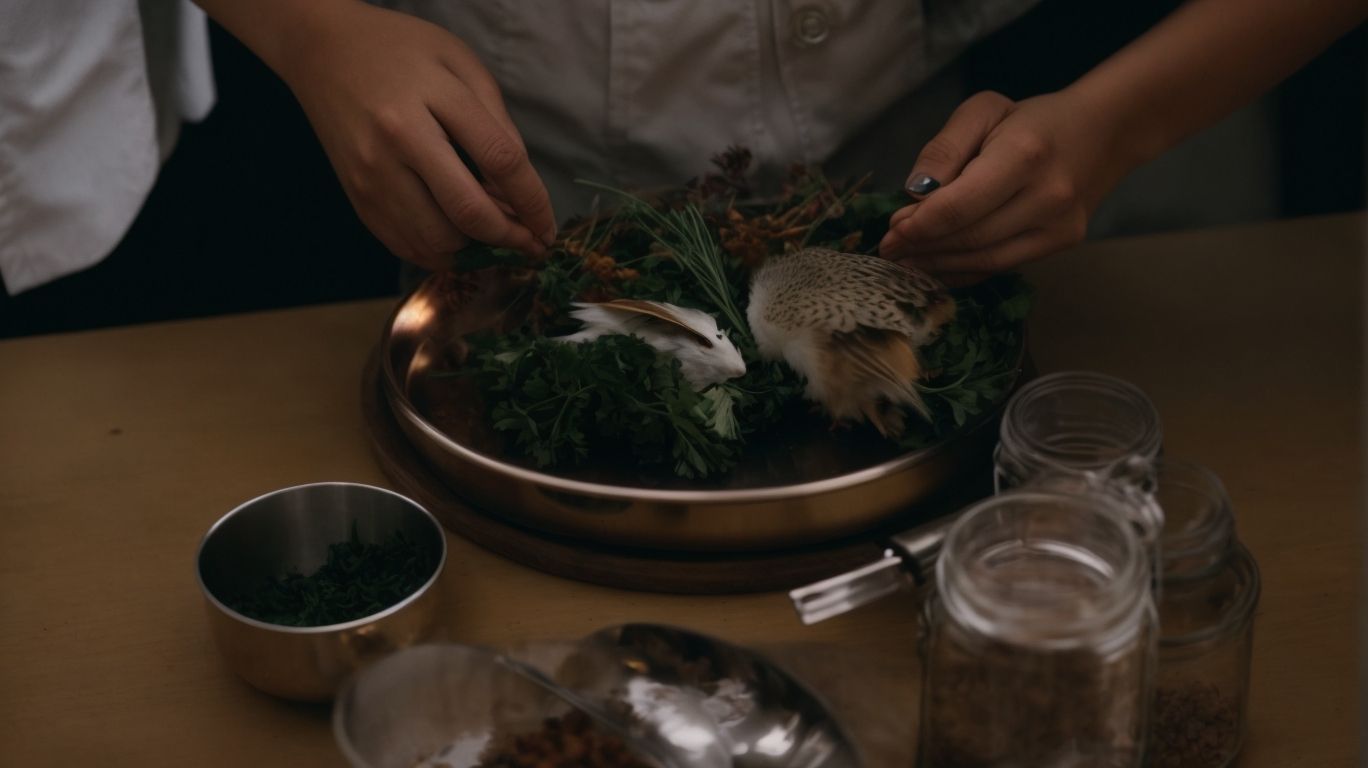
Credits: Poormet.Com – Christian Campbell
Preparing quail for stove cooking involves meticulous cleaning, precise trimming, and flavorful marinating and seasoning to enhance the natural taste of the meat.
To begin, thoroughly rinse the quail under cold water to remove any excess blood or feathers. Then, carefully pat them dry with paper towels. Next, using a sharp knife, trim off any excess fat or skin. This process not only enhances the appearance of the dish but also helps in achieving a more even cooking. Moving on to marinating, create a mixture of herbs, spices, and olive oil in a bowl. Coat the quail generously with this marinade, ensuring each piece is well covered. Let the quail marinate for at least an hour to absorb all the flavors before cooking.
Cleaning and Trimming
Cleaning and trimming quail require a sharp straight knife for precise removal of excess fat, bones, and other unwanted parts, ensuring a clean and presentable final dish.
Before starting the process, make sure the quail is properly thawed if previously frozen. Begin by gently rinsing the quail under cold water to remove any surface dirt or debris. Pat dry with paper towels before laying it flat on a cutting board. Using the sharp straight knife, carefully trim off any visible fat around the cavity and excess skin.
- Next, locate the breastbone and make a shallow incision along its length to open up the body cavity.
- Remove the internal organs and entrails, discarding them properly.
- Trim off any excess fat and small bones from the legs and wings.
- Once cleaned and trimmed, rinse the quail again and pat dry, ensuring no moisture remains before preparing it for cooking.
Marinating and Seasoning
Marinating and seasoning quail with flavorful ingredients like mushrooms, pancettia, and jus can infuse the meat with rich tastes and textures, enhancing the overall culinary experience.
When marinating quail, the process allows for the flavors to seep into the meat, tenderizing it and creating a depth of taste that simply pan-searing cannot achieve. The addition of mushrooms brings an earthy umami quality, while pancettia offers a subtle smokiness that complements the quail’s natural flavors.
The jus, with its concentrated essence of herbs and spices, not only adds moisture but also harmonizes the different elements in the dish, elevating it to a gastronomic delight.
What Are the Different Cooking Methods for Quail on the Stove?
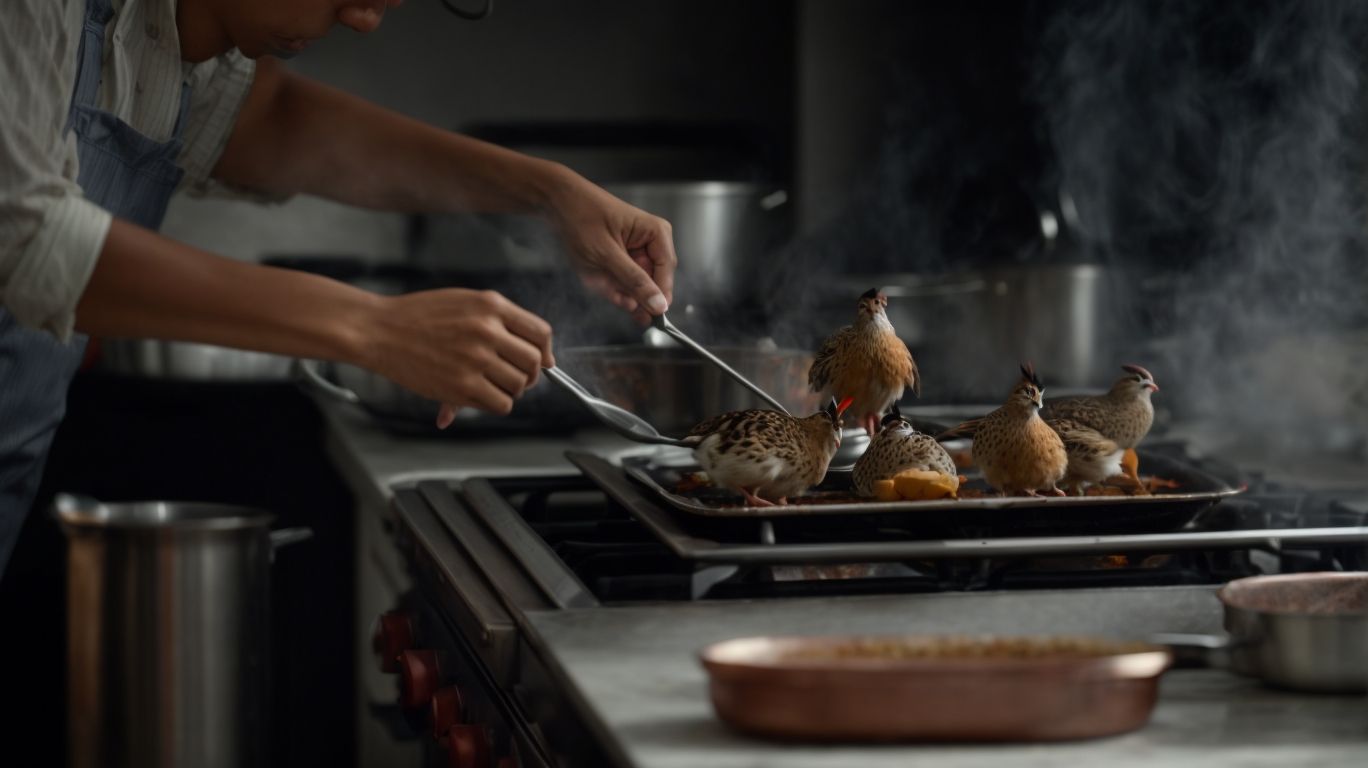
Credits: Poormet.Com – Brian Thomas
When cooking quail on the stove, you can choose from various methods such as pan-searing for a crispy exterior, roasting for even cooking, or grilling for a smoky flavor profile.
Each of these methods offers unique advantages for enhancing the flavors of quail.
- Pan-searing locks in juices while creating a delightful crust, perfect for those looking for a quick and tasty cooking option.
- On the other hand, roasting ensures that the meat is cooked evenly, resulting in tender and succulent quail.
- Grilling imparts a distinct smokiness, adding a rustic charm to the dish, ideal for outdoor gatherings or BBQ events.
Pan-searing
Pan-searing quail on the stove creates a crispy exterior and flavorful sear, achieved by using a combination of butter and oil to enhance the overall taste and texture.
Heating a cast-iron skillet over medium-high heat is crucial, allowing the quail to sizzle as it makes contact with the hot surface. The butter adds a rich flavor, while the oil helps in achieving the desired crispiness.
Careful attention should be paid to not overcrowd the pan, ensuring each quail has enough space to sear properly.
The key is to cook the quail until golden brown on the outside, while still keeping the meat tender and juicy inside.
This method brings out the natural flavors of the quail, making it a delicious and elegant dish for any occasion.
Roasting
Roasting quail in the oven allows for even cooking and crispy skin, highlighting the natural flavors of the seasoned meat for a delightful culinary experience.
When roasting quail, it’s crucial to ensure that the heat distributes evenly, resulting in a perfect balance of tenderness and a crispy outer shell. This method not only sears the skin to a golden brown but also locks in the succulent juices, guaranteeing a moist and flavorful outcome.
Seasoning plays a pivotal role here, as it enhances the taste profile and elevates the overall dish. The tantalizing aroma that fills the kitchen as the quail roasts is an experience that truly excites the senses, promising a memorable meal for anyone at the table.
Grilling
Grilling quail on the stove infuses the meat with a smoky aroma and charred flavor, enhanced by basting with butter and oil for a succulent and savory result.
When grilling quail, the key is to achieve the perfect balance of heat to ensure the meat cooks evenly while retaining its tenderness. The smoky aroma that fills your kitchen or backyard adds an enticing element to this dish, making it an absolute delight for your senses. By basting the quail with a mixture of butter and oil, you not only enhance the natural flavors of the meat but also add a rich and indulgent touch that elevates the overall taste profile.
Tips for Cooking Quail on the Stove
Mastering the art of cooking quail on the stove entails precision in timing, temperature control, thorough checks for doneness, and proper resting before serving to ensure a delightful dining experience.
When cooking quail on the stove, it’s crucial to keep a close eye on the timing to prevent overcooking and ensure that the meat remains tender and juicy. Temperature control is key; maintaining a medium-high heat allows for a nice sear on the outside while keeping the inside moist.
Performing regular checks for doneness is essential; pierce the meat with a fork to confirm that it’s cooked through but still tender. Once the quail is ready, resting it for a few minutes before serving allows the juices to redistribute, enhancing the overall flavor profile.
Cooking Time and Temperature
Achieving the perfect balance of cooking time and temperature is crucial for ensuring a crispy exterior and flavorful sear when cooking quail on the stove.
Proper temperature control allows the quail’s skin to crisp up evenly, creating that satisfying crunch when you bite into it. With precise timing, you can ensure that the meat remains tender and juicy, not overcooked or dry. This delicate balance between heat and timing is what elevates a simple quail dish to a gourmet experience.
Mastering the art of stove-cooking quail requires attention to detail; the pan should be preheated to just the right temperature to achieve that beautiful sear without burning the exterior. A high-quality thermometer will aid in monitoring the cooking process, ensuring that the internal temperature reaches the perfect level for both safety and taste.
Checking Doneness
Checking the doneness of quail meat is essential to ensure it is cooked to perfection, maintaining its tenderness and preserving the unique game flavors.
One method for assessing the readiness of quail meat is by using a meat thermometer to check the internal temperature. Insert the thermometer into the thickest part of the meat without touching the bone to ensure an accurate reading. For quail, a temperature of 165°F (74°C) indicates proper doneness.
Another way to check doneness is through touch. Press gently on the meat; if it feels firm yet slightly springy, it is likely cooked. If it feels too soft, it may need more time.
Observing the color of the meat can be a helpful indicator. Properly cooked quail should have a slightly pink hue, signaling that it is juicy and tender.
Resting and Serving
Allowing quail to rest after cooking is crucial for the flavors to meld and intensify, ensuring a delectable dining experience when served with savory sauces and plums.
Resting quail post-cooking allows the juices to redistribute, resulting in tender and moist meat that is full of rich flavors. This process enhances the overall taste and texture of the dish. When paired with savory sauces, such as a velvety red wine reduction or a fragrant herb-infused jus, the quail takes on a whole new depth of flavors. The addition of plums, whether roasted alongside the bird or as a compote, brings a delightful contrast of sweetness that perfectly complements the savory elements of the dish.
Frequently Asked Questions
What equipment do I need to cook quail on the stove?
To cook quail on the stove, you will need a stove, a skillet or pan, tongs, a meat thermometer, and a sharp knife.
How do I prepare the quail before cooking it on the stove?
Start by patting the quail dry with paper towels. Then, season with salt, pepper, and any desired herbs or spices. You can also marinate the quail beforehand for added flavor.
What is the best cooking method for cooking quail on the stove?
I recommend using a skillet or pan to cook quail on the stove. This allows for even cooking and better control of the heat.
How long does it take to cook quail on the stove?
The cooking time for quail on the stove will vary depending on the size of the quail and the cooking method. Generally, it takes about 5-7 minutes per side for small quail and 8-10 minutes per side for larger quail.
How do I know when the quail is fully cooked?
The best way to determine if quail is fully cooked is by using a meat thermometer. The internal temperature should reach 165°F (74°C) for the quail to be safe to eat.
Can I use any type of pan to cook quail on the stove?
While a skillet or pan is recommended for cooking quail on the stove, you can also use a grill pan or a cast iron skillet. Just make sure the pan is well-seasoned and preheated before cooking the quail.

